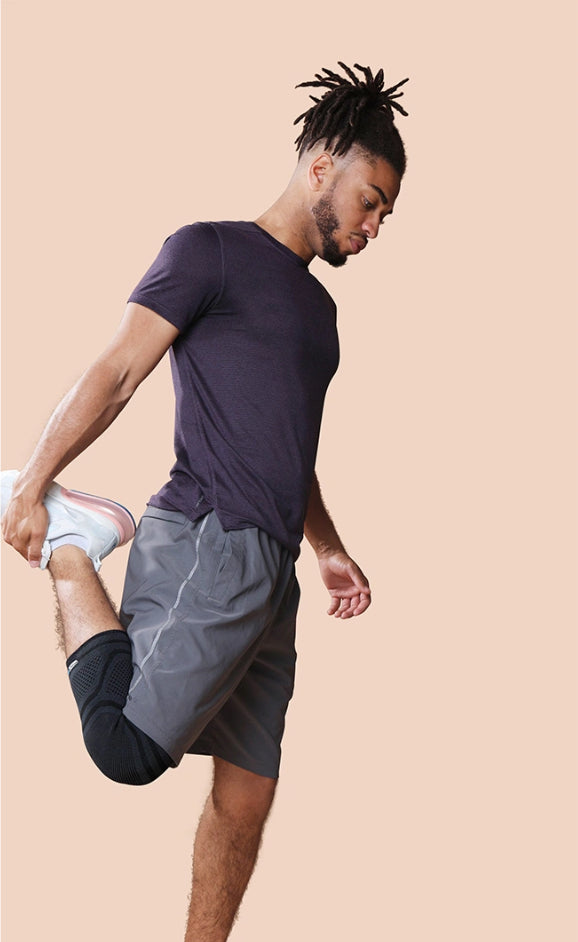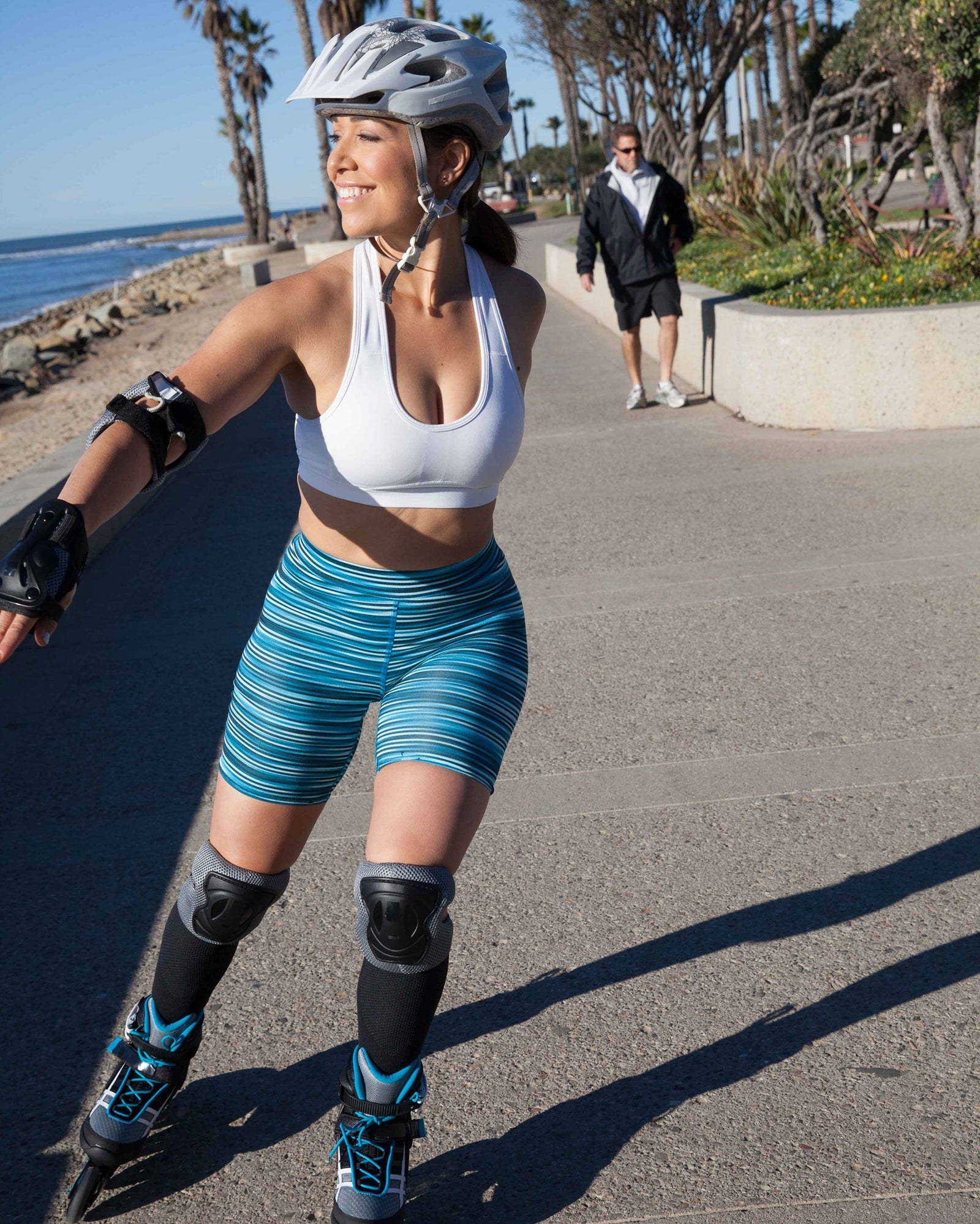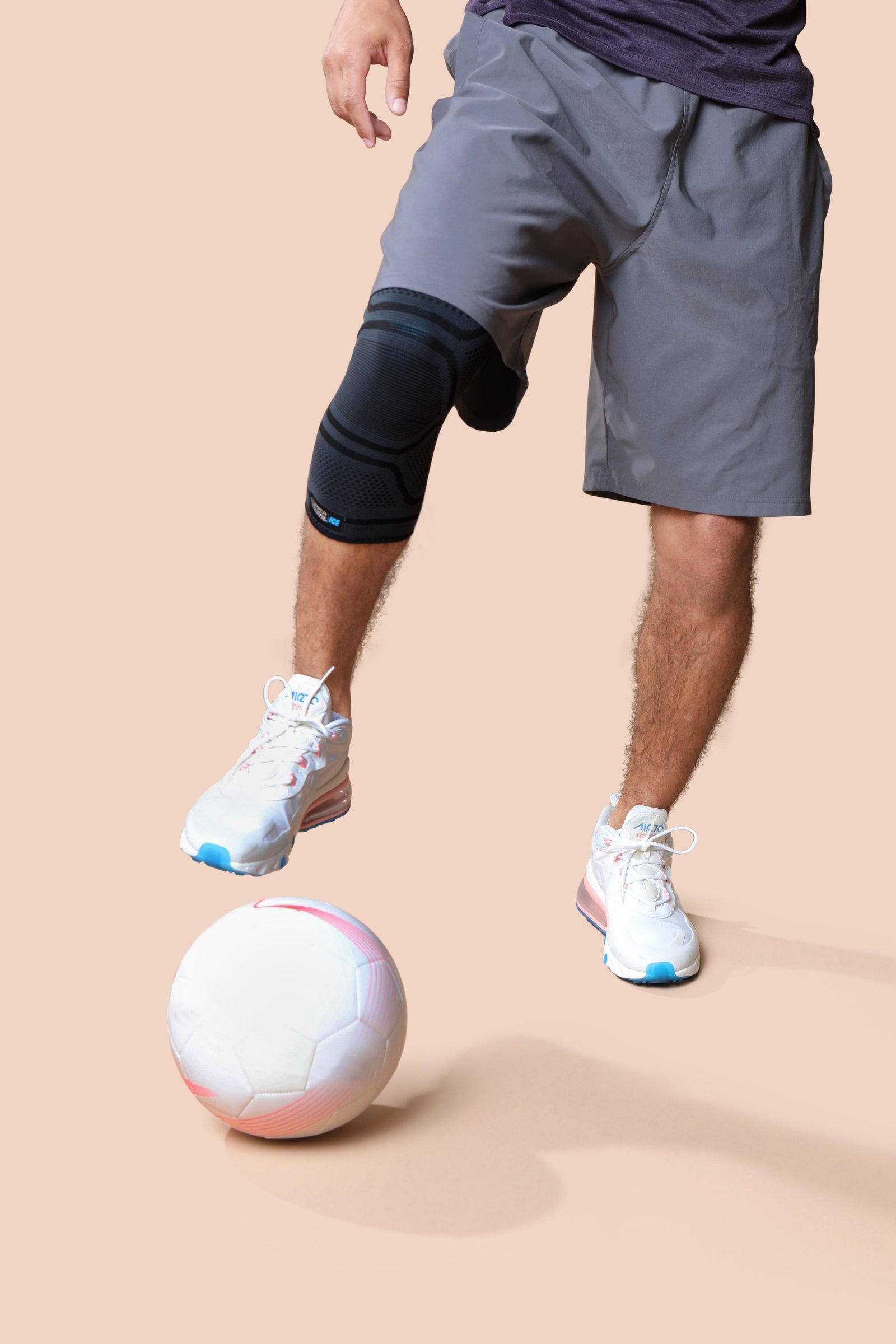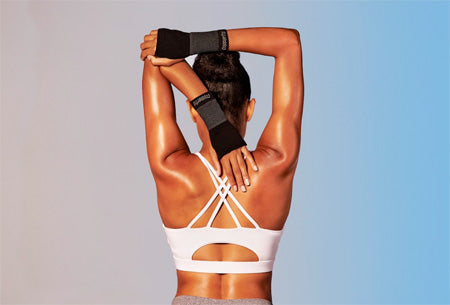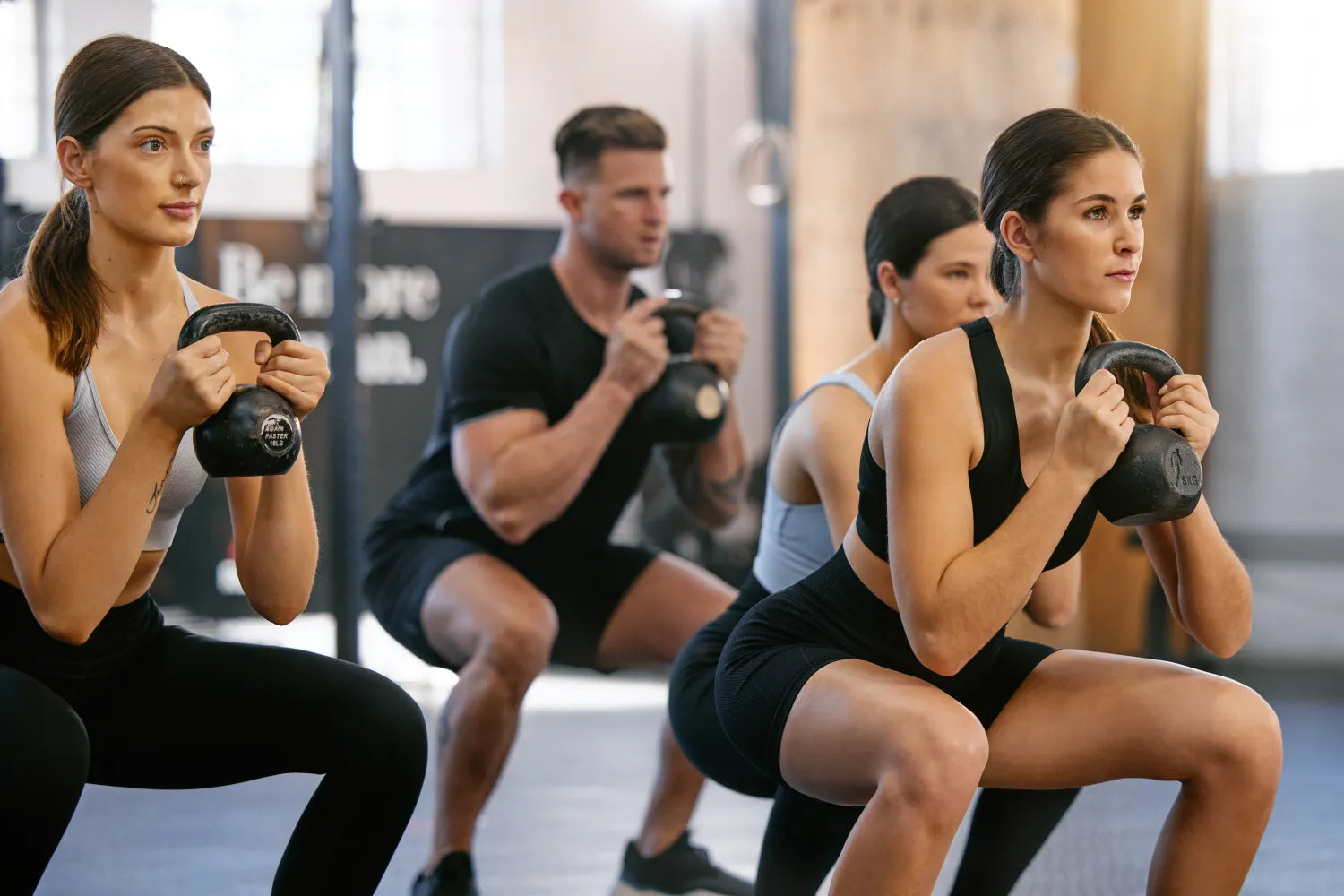
Knee pain when squatting is a common issue that many people experience, regardless of age or fitness level. It can be a frustrating barrier to maintaining an active lifestyle and performing daily activities. However, understanding the root causes of this discomfort and how to address it can significantly improve your exercise experience and overall well-being.
At Copper Fit, we are dedicated to supporting your comfort and recovery, empowering you to stay active and feel your best every day. In this article, we'll delve into the intricacies of knee pain during squats, its common causes, and how to prevent it.
What Role Does the Knee Joint Play?
The knee joint, often overlooked, plays a significant role in our daily lives. It allows us to perform basic activities like walking, running, and sitting, but it also enables us to engage in more complex movements like squatting. This joint is a marvel of natural engineering, providing both stability and flexibility.
The knee joint is composed of bones, ligaments, and cartilage, all working together to facilitate movement. When we squat, the knee joint flexes, engaging the quadriceps and hamstring muscles. The ligaments and cartilage provide support and cushioning, ensuring smooth, pain-free movement.
How Important Is Maintaining Knee Strength?
However, the knee is not a standalone structure. Its health and function are closely tied to the health of the muscles and joints that support it, including the hips and ankles. Therefore, maintaining the overall health of these supporting structures is crucial for the optimal functioning of the knee joint.
The knee joint's importance becomes even more apparent when it's not functioning correctly. Knee pain when squatting can be a frustrating barrier to maintaining an active lifestyle and performing daily activities. However, understanding the root causes of this discomfort and how to address it can significantly improve your exercise experience and overall well-being.
Why Does Knee Pain Occur When Squatting?
The knee is a complex joint that plays a critical role in movements like walking, running, and squatting. It's composed of several parts, including bones, ligaments, and cartilage, all working together to provide stability and mobility.
When you perform a squat, your knee joint flexes, engaging the quadriceps and hamstring, while the ligaments and cartilage provide support and cushioning.
Misalignment
However, if the knee is not properly aligned or supported during a squat, it can lead to strain or pressure on these structures, resulting in discomfort. The knee is not a standalone structure, and its health and function are closely tied to the health of the muscles and joints that support it, including the hips and ankles. Misalignment or weakness in these areas can also contribute to knee discomfort during squats.
Wear and Tear
Moreover, the knee can be vulnerable to injury or wear and tear, especially if you frequently engage in high-impact activities or sports. Discomfort during squats could also indicate an underlying issue with the knee's structures, such as a torn meniscus or arthritis.
Understanding the mechanics of your knee and the impact of squatting on this complex joint is the first step toward addressing knee pain. In the next section, we will delve into the common causes of knee pain during squats and provide insights on how to address and prevent this common issue.
What Are the Common Causes of Knee Pain When Squatting?
Knee discomfort while squatting can stem from various factors, and pinpointing the root cause is key to finding effective solutions. Understanding these causes can help you make informed decisions about your workout routine and overall knee health.
Here are some of the most common reasons why knee pain might occur during squats.
- Poor Squatting Technique: Incorrect form during squats can place excessive pressure on your knees. For instance, allowing your knees to cave in or extend beyond your toes can strain the ligaments and tendons in the knee. It's crucial to maintain proper alignment throughout the movement to distribute weight evenly and reduce strain.
- Overuse of the Knee Joint: Engaging in repetitive squatting or high-impact activities without adequate rest can overwork the knee joint, leading to strain or injury over time. It's crucial to listen to your body and give it enough time to recover between intense workout sessions.
- Underlying Knee Conditions or Injuries: Conditions like osteoarthritis, meniscus tears, or patellar tendinitis can cause discomfort during squats. These conditions often result from previous injuries, wear and tear, or other health factors. If you've had a knee injury in the past or have a chronic knee condition, it's always best to consult with a healthcare professional before engaging in exercises like squats.
- Lack of Proper Warm-Up or Stretching: Skipping warm-up exercises or not stretching adequately before squatting can result in stiff muscles, reducing the support they provide to the knee joint during the movement. Incorporating a thorough warm-up and stretching routine can help prepare your body for the workout and reduce the risk of discomfort.
Identifying the cause of your knee discomfort during squats is the first step toward finding relief and preventing further discomfort. Every individual is unique, and what works for one person may not work for another. It's always a good idea to consult a healthcare professional if you have concerns about knee pain during squats.
How Can You Prevent Knee Pain When Squatting?
Preventing knee pain when squatting is achievable with a few careful considerations and adjustments to your routine.
Here are some strategies that can help:
- Proper Squatting Technique: Ensuring good form is essential when squatting. Keep your feet shoulder-width apart, your chest up, and bend at the hips and knees as though sitting back into a chair. Your knees should remain in line with your feet and not extend beyond your toes.
- Warm-Ups and Stretching: Begin your workout with a light warm-up to increase blood flow and flexibility. Incorporate dynamic stretches that target the muscles supporting the knee, such as the quadriceps, hamstrings, and calves.
- Balancing Rest and Exercise: Avoid overworking your knees by balancing periods of activity with rest. If you're new to squatting or increasing your intensity, do so gradually and listen to your body's signals.
- Maintaining a Healthy Weight: Extra weight can put additional pressure on your knees. Maintaining a healthy weight can help reduce this strain and support overall joint health.
Recognizing and Addressing Persistent Knee Pain
If knee discomfort persists despite making the necessary adjustments to your squatting technique and routine, and even after using supportive aids like Copper Fit knee sleeves, it's crucial not to ignore these signs. Persistent knee pain could indicate an underlying condition or injury that requires medical attention.
It might be tempting to 'power through' the pain, but this can often exacerbate the issue and prolong your recovery time. Rather than flexing through discomfort, take persistent knee pain as a signal that your body needs attention and care. Take care of your body, and it will take care of you—don’t push it too hard.
The Role of Professional Guidance and Physical Therapy
In cases of persistent knee discomfort, consulting with a healthcare professional or a physical therapist can be highly beneficial.
These experts can perform a thorough examination, identify the root cause of your discomfort, and provide a tailored treatment plan. This plan may include targeted exercises and stretches designed to strengthen the muscles around your knee, improve flexibility, and promote better joint health.
Physical therapy can often be an effective approach to managing persistent knee discomfort without invasive surgical procedures. It addresses the issue and provides the knowledge and tools to prevent future injuries. A physical therapist can guide you in learning the correct form for exercises, including squats, and help you understand the mechanics of your body better.
Moreover, if your knee pain is due to an underlying medical condition, your healthcare provider may recommend additional treatments such as medication, injections, or, in some cases, surgery. It's essential to follow your healthcare provider's advice and treatment plan to ensure a successful recovery.
Copper Fit's Commitment to Your Comfort and Recovery
Understanding and addressing knee pain when squatting is crucial for maintaining an active lifestyle and achieving your fitness goals. By paying attention to your squatting technique, balancing exercise and rest, and seeking professional advice when needed, you can help prevent and manage knee discomfort.
Copper Fit products, such as our knee sleeves and wraps, are designed to support your comfort and recovery, providing essential support to your knees during squats and other physical activities.
Every step you take toward understanding and managing knee discomfort contributes to your overall health and wellness. At Copper Fit, we're committed to supporting and empowering you to stay active and feel your best every day and to prevent and manage knee discomfort.
Sources:
Patellar malalignment: A common disorder associated with knee pain | PMC
Here’s the Right Way To Do a Squat | Cleveland Clinic
What are the Benefits of Warming up Before Exercise? | TAMU
Harvard Expert: What you can expect form knee and hip surgery

